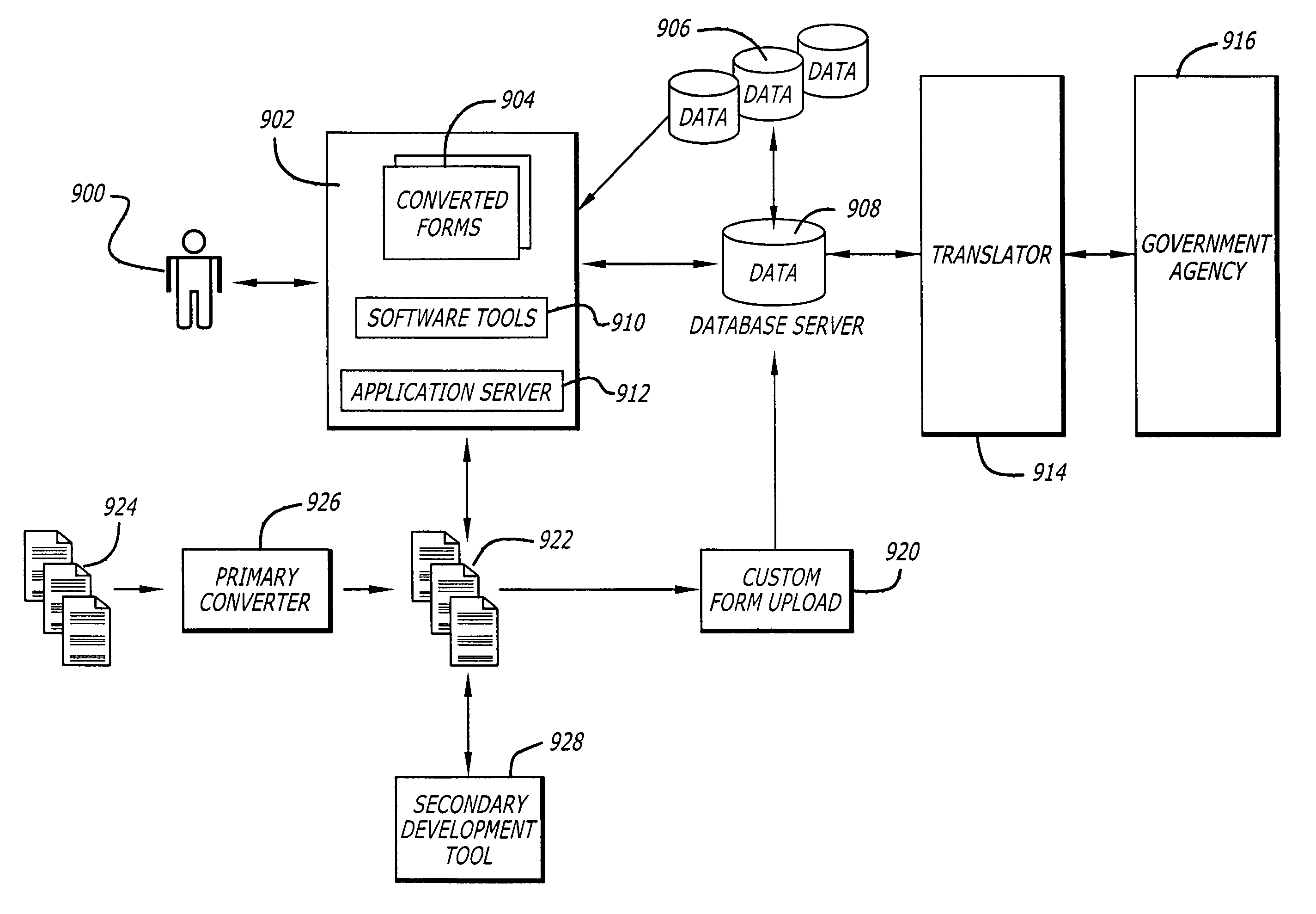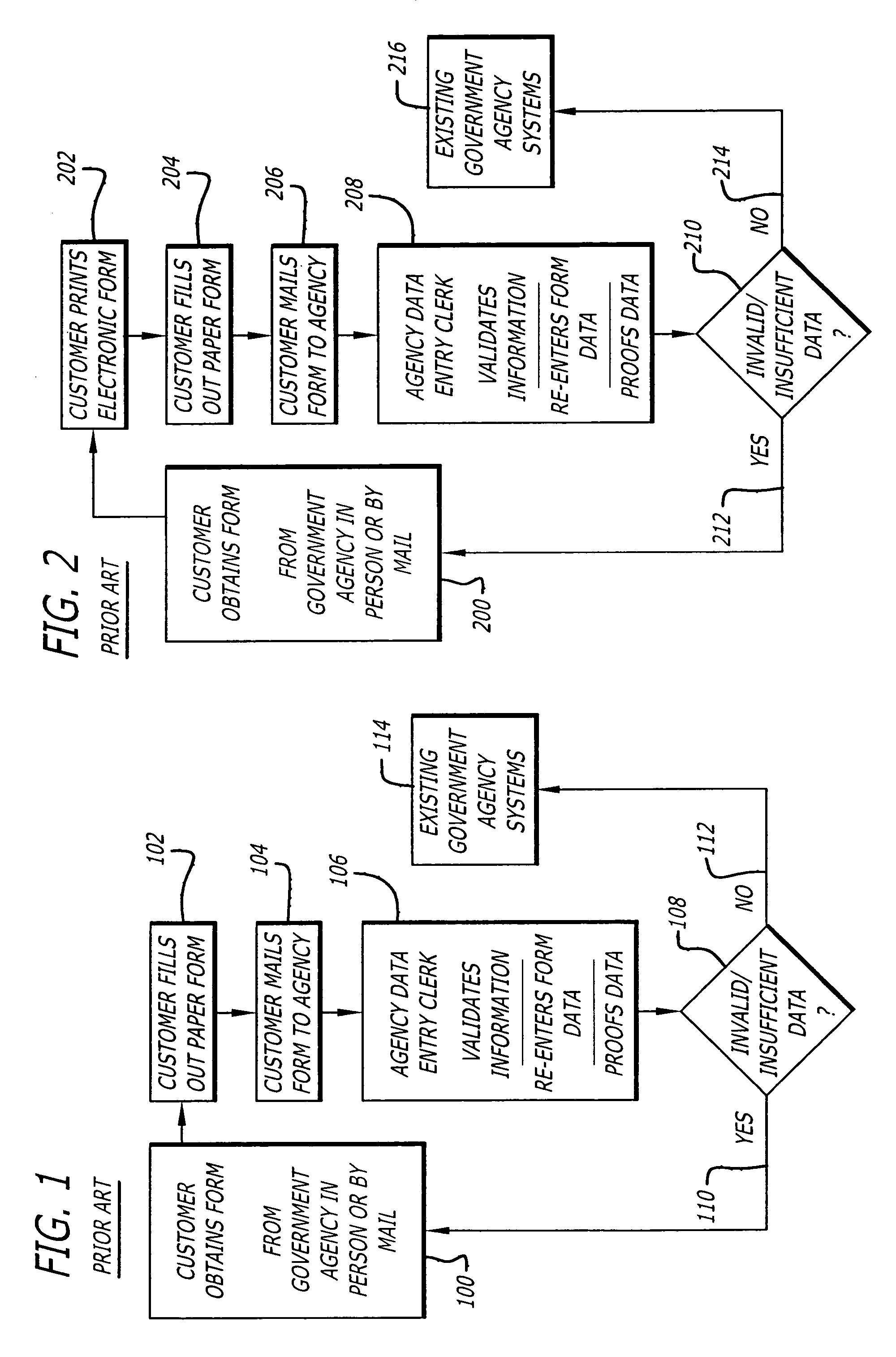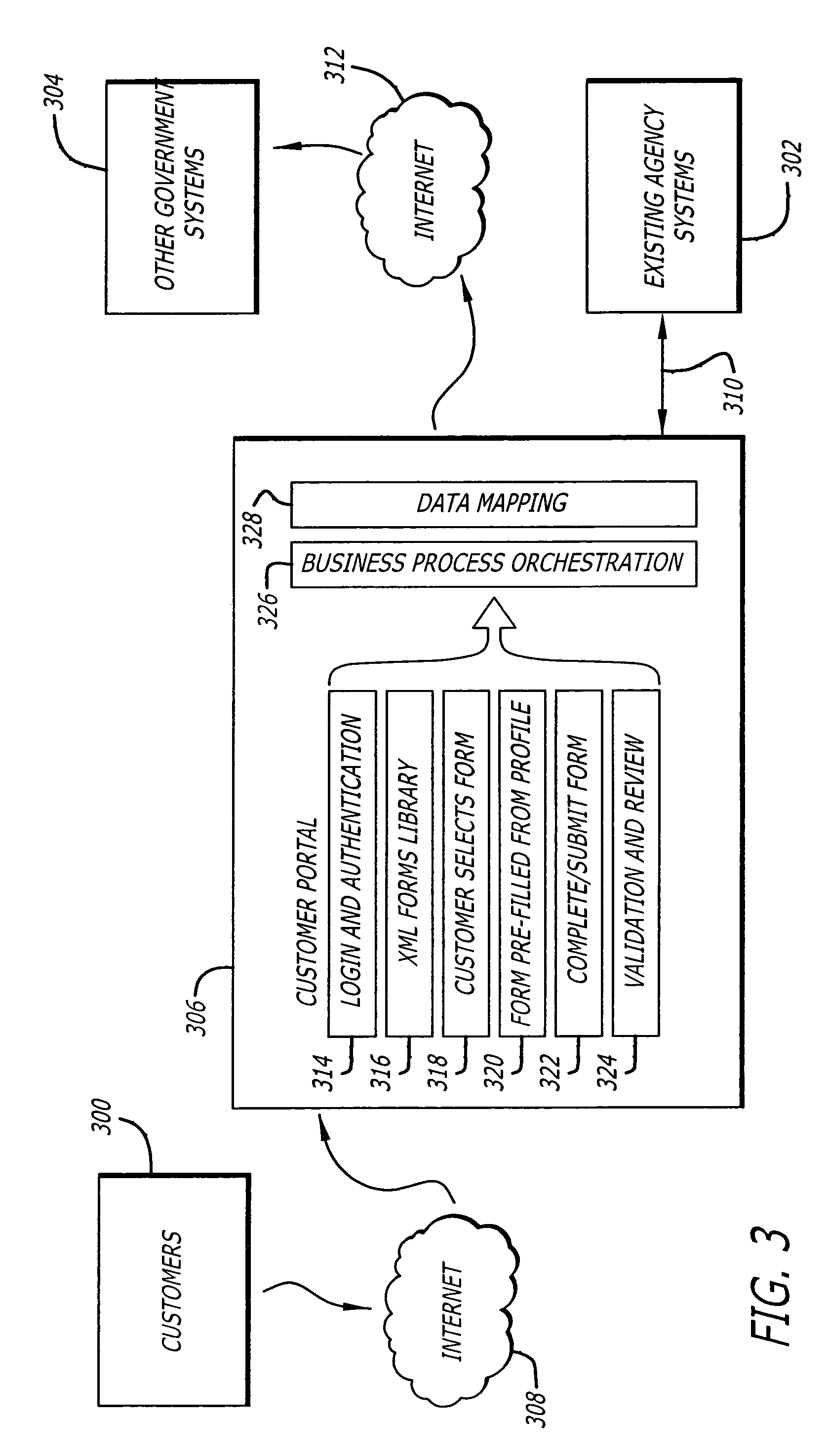Single access point for filing of converted electronic forms to multiple processing entities
a technology of electronic forms and access points, applied in data processing applications, instruments, computing, etc., can solve the problems of time-consuming process, drawbacks, and high number of inefficiencies, and achieve the effect of efficient transacting with government forms
- Summary
- Abstract
- Description
- Claims
- Application Information
AI Technical Summary
Benefits of technology
Problems solved by technology
Method used
Image
Examples
Embodiment Construction
[0027]FIG. 3 illustrates an exemplary embodiment of the present invention including a method for efficient government forms processing. According to the method of the present invention, customers 300 interact and participate in transactions with government agencies by transmitting electronic government forms to existing government agency systems 302. The method of the present invention also supports interaction between customers 300 and other government systems 304 that may be continuously added or updated without changing the architecture or underlying code of the interface mechanism between customers 300 and existing agency systems. Therefore, the present invention provides a robust and easily scalable software architecture for supporting customer interaction and efficient transacting with various, non-uniform government agency systems. Examples of government agencies the present invention may be utilized with are national government branches and agencies, local government units, ...
PUM
 Login to View More
Login to View More Abstract
Description
Claims
Application Information
 Login to View More
Login to View More - R&D
- Intellectual Property
- Life Sciences
- Materials
- Tech Scout
- Unparalleled Data Quality
- Higher Quality Content
- 60% Fewer Hallucinations
Browse by: Latest US Patents, China's latest patents, Technical Efficacy Thesaurus, Application Domain, Technology Topic, Popular Technical Reports.
© 2025 PatSnap. All rights reserved.Legal|Privacy policy|Modern Slavery Act Transparency Statement|Sitemap|About US| Contact US: help@patsnap.com



